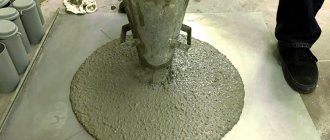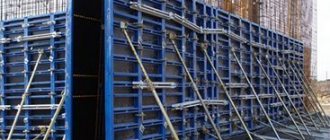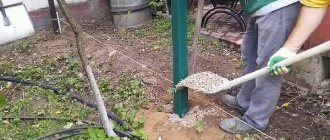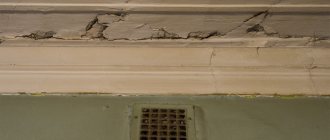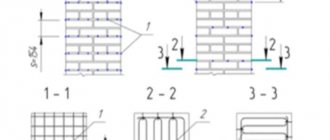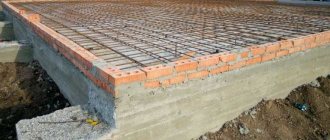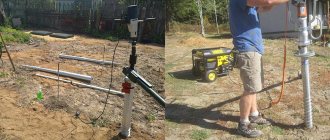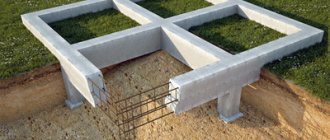Brief description of the equipment
Modern manufacturers produce high-quality manholes for quick and safe climbing onto concrete supports. All of them have not only positive properties, but also distinctive performance characteristics. That is why experts divide such equipment into three main groups:
- Manholes on concrete. Designed for round and trapezoidal supports.
- Universal fitter claws. They are used for round metal and wooden poles (it is worth noting that in the modern world wooden poles are practically not used).
- Claw-holes. Equipped with a specific control solution, which is especially effective in relation to trapezoidal reinforced concrete pillars.
Claw-holes are considered the most popular, since their functionality can be used in relation to all standard supports. However, manholes are used only on those pillars that are indicated in the accompanying documentation. Of course, any electrical installation company should have quality claws at its disposal, especially if it is involved in the installation and maintenance of power lines.
Modern manholes are made exclusively from high-quality materials, so they can be used in almost any climatic conditions. They tolerate sudden temperature changes well (from -30˚С to +55˚С).
Why do electricians need installation manholes and how to choose them
Power lines often require repair work. It happens that this intervention must be immediate.
Then the so-called cat's claws or monter's manholes are used.
Every organization involved in the maintenance and installation of power lines has such a device.
Purpose and purpose
An electrician's manhole is a tool that allows an electrician to easily climb a vertical pole to carry out any type of work at height. This can be repair, installation, or preventative work.
Outwardly, they look like two hooks with teeth and straps attached to them, with the help of which the device is fixed on the leg. The tool works due to the rigidity of the metal from which it is made.
The diameter of the hook is larger than the size of the post. When the hook is perpendicular to the axis of the post, the leg can move up and down. When the hook is placed at an angle to the axis, movement becomes impossible. This is how the worker fixes his position at the desired height and begins work.
What materials are they made from?
Nowadays, wooden power transmission poles are practically not found. And this is understandable, because reinforced concrete structures are much stronger and more durable.
The universal manholes have also undergone changes. They were supplemented with special carbide inserts, which reduce the likelihood of slipping and reduce tool wear. These elements resemble cat paws.
The material from which manholes are made is most often high-quality high-strength steel. For additional strength, the metal is treated with an anti-corrosion coating.
This not only gives the product hardness, but also increases its service life. Belts are made from several layers of wear-resistant yuft and rawhide. The belts are stitched with high-strength nylon threads.
Types and their characteristics
You can purchase the required type of manholes by deciding on their purpose. If you plan to work on wooden poles, then you should buy one type of device. When working on concrete supports, a different type is chosen.
Manholes are divided into several types:
- lineman's claws (for round metal and wooden poles), now they are practically not used;
- assembly manholes for concrete (for round or trapezoidal concrete pillars), very common;
- Installer's manhole claws (for supports made of reinforced concrete in the shape of a trapezoid) are quite popular, the opening of the manholes is adjustable, which allows them to be used on any support.
Recommendations for selection
Use our recommendations for choosing manholes to purchase a quality product:
- Price. In the case of installation equipment, you should not chase the cheapest. Too low a price may indicate the low quality of the metal from which the device is made, and this affects the most important thing - safety. Choose a medium or high price category of goods.
- Manufacturer. Pay attention to the manufacturer. Trust trusted manufacturers who produce high-quality, reliable and durable products.
- Scheduled checks every six months to check the level of wear, the results of which are marked on the product.
- Quality. Claws and manholes must comply with TU, GOST standards and have a quality certificate. Metal elements must be free of defects, seams must be smooth, straps must be at least 0.3 cm thick. The stitches on the leather must be straight and well fastened.
- The device must be marked with information: production date, trademark, batch number.
When used correctly, monter's manholes are safe and suitable for use for at least 12 months.
Care, storage, service life
Manholes are a universal device; they can be used in almost any climate zone with a temperature range from minus 40 to 50 degrees above zero. This means that work on power lines can be carried out both in the northern regions and in hot and sultry conditions.
The service life is indicated by the manufacturer. Time is counted from the moment the products are put into operation. No later than a year later, such a tool must be removed and recycled or disposed of. The maximum operating life of manholes is 60 months. Components are changed during operation as needed. The warranty period is usually 1 year from the moment the product is put into operation.
Store the device in a temperature range from minus 20 to 30 degrees above zero. It is unacceptable to store manholes in a room with an open roof; precipitation will leave a sharply negative mark on the quality of the devices.
It is forbidden to store them in the open sun or in a damp place. Optimal conditions are a ventilated warehouse with an average temperature.
You cannot repair claws yourself without having the appropriate knowledge and experience. If any malfunctions are detected, it is prohibited to operate the device.
Monter's manholes do not require special care. After use, they must be cleaned, any remaining dirt must be removed with a rag and stored away. Do not wash under water or wipe with wet material.
In conclusion of our article, we suggest watching a video of how assembly manholes are made and how to correctly lift using them:
No comments yet
fufayka.net
Areas of use
Multifunctional manholes on concrete supports are designed to quickly deliver an installer to a damaged power line. You simply cannot do without such equipment when laying and servicing the cable, especially if urgent repairs to the electrical network are needed. The team does not always have the opportunity to use large vehicles, which is why manholes are considered simply an irreplaceable option. The main challenges are often related to cramped buildings and difficult terrain.
Quite often, manholes are used to quickly replace LED lighting on street poles. This trend is due to the fact that there is a lot of work, and using specialized equipment is impractical. The huge advantage of this equipment is that the kit includes two strong feet, as well as a universal waist belt, which must be looped around the main post and fixed on the master’s belt using a powerful carabiner. This simply eliminates the possibility that the installer will somehow deviate from the support and disrupt the necessary platform grip.
Separately, it is worth noting that modern claws can be inserted and removed from the main part of the support without any effort; just a simple movement of the leg is enough. The presence of special studs significantly enhances the final grip. At the moment when the weight of the installer presses on the platform, each pin clings to the concrete, which increases contact with the surface.
Design and principle of operation
The simplest manholes for concrete supports consist of 2 elements for attaching to shoes, each of which consists of the following main components:
- Oval foot support with transverse reinforcements;
- 2 straps holding the foot on the platform;
- “Sickle” is a rectangular grip with 4 conical spikes attached at an angle of approximately 600 to the supporting platform.
Climbing onto a reinforced concrete pole using a similar device occurs as follows:
- The electrician securely fixes the manholes on his shoes using belts;
- Approaching the pillar, he grabs it with the grips of each of the elements of the claws;
- The electrician climbs the pole, thanks to the fact that the claw grips, which he alternately rearranges in the vertical plane, located at an angle to the supporting platforms, bite into the concrete with their spikes and prevent slipping.
Using a similar principle, electrical claws designed for this type of support help you climb onto a wooden pole. Their only differences from the crampons used for concrete pillars are the semicircular shape of the grips and softer spikes.
Scheduled inspection
Each type of equipment that is used by craftsmen to carry out electrical installation manipulations must be subject to routine inspection and heavy load testing. This category also includes pole holes. When a product passes a static load test, a certain force (more than 1350 N) is applied to the fixing belts. In this case, it is important to note that the load line must pass through the center of the footrest. In addition, experts have developed a step-by-step guide that will help novice technicians properly maintain cats:
Manufacturers note that concrete manholes are considered mandatory equipment for installers who professionally install and repair power lines. When purchasing such equipment, you should always pay attention to the fact that such devices must not only be of high quality, but also completely safe for use.
The employee must study all regulatory documents that describe in detail the requirements and rules for the use of cats. You should not neglect these rules, as such behavior is fraught with serious injury and damage to the limbs.
Monitoring the condition of used devices
All auxiliary equipment used for electrical installation work must undergo inspection and load testing every 6 months. Concrete installation manholes are no exception.
When performing a static load test, a force of 1350 N is applied to the fixing straps of the device, and the load line P must pass through the center of the footrest according to the diagram (see photo).
The tests must be carried out in the following sequence:
- Inspect the manholes - check the fastening of all parts (spikes, sickle), the reliability of the firmware of the belts and the strength of the buckles. The spikes must be securely fastened with a lock nut, tightened as far as possible and sharpened in the correct direction.
- The spike tests are carried out on a wooden pole with a diameter equal to the corresponding claw number.
- The spike must withstand a static load of 135 kgf without causing residual deformation or breaking welds, as well as without breaking the belts or damaging the buckle.
- The presence of deformation is checked by measuring the rise of the tenon and the solution of the device before and after testing.
- After testing and control inspection, manholes that have received defects as a result of mechanical loads are subject to removal from further use.
Concrete climbers are mandatory equipment for personnel involved in the maintenance and repair of power lines. The necessary requirements for such devices are high-quality and safe execution, and for the employee - full knowledge of all regulatory documents describing all the requirements and rules for using the tool.
The cost of non-compliance with the rules of operation of this type of equipment is injury and damage to the limbs.
Source: concrete-house.com
Design differences
Standard installer's manholes are presented in the form of ordinary cats, which until recently were actively used for wooden poles, but are now suitable for any supports. This equipment is distinguished by its reliability and durability. Manholes consist of two main elements:
As for belts, several layers of backlash or rawhide can be used to make them (each layer must be stitched with strong nylon thread) or two-layer leather, which is stitched in two layers. It is worth noting that for high-altitude work on concrete pillars, claws of a universal design are used. The mounting hook has a very unusual shape, which can be similar to a trapezoid, sickle or rectangle.
For strong adhesion to the surface of the support, the hook is equipped with special spikes. Such manholes are made of high-quality steel, which can additionally be treated with anti-corrosion paint. Due to this, the service life of cats is significantly increased.
Modern holes for concrete pillars can be used for trapezoidal supports. Depending on the manufacturer, such models may be equipped with special carbide-type inserts that reduce possible slipping and wear of the claws. It is worth noting that the total weight of the manholes can be 5 kg. Structurally, such equipment looks like this: an adjusting insert, a footrest, a fastening belt, an engagement bracket.
Alternative equipment option
Manufacturers most often draw the attention of their customers to the fact that the maximum service life of such equipment is 5 years. After a year, the manholes must be inspected for damage and deformation. If necessary, some parts can be replaced.
That is why many craftsmen often decide to purchase logs for concrete supports from scratch. In order to avoid the most common mistakes, the master must be aware of how to properly test the strength of such equipment. Despite the fact that used claws do not have any markings or instructions for use, they must meet a number of requirements:
- Be strong and durable.
- Support the weight of the installer.
- Have removable spikes.
- They are distinguished by an easy type of adjustment.
Operating rules
Domestic and foreign manufacturers clearly regulate the basic standards for the use of claws. You can read all the rules in the attached instructions. As practice shows, for the correct operation of manholes it is necessary to adhere to the following recommendations:
- Each item of upcoming events is always agreed upon in advance, and all actions on the ground are worked out in detail. The executive must have permits that confirm his admission to work at height.
- Repairs to any power line must be carried out only when the power is turned off. The technician must use specialized insulating gloves and rubber grounding devices.
- Modern assembly manholes are designed for high-altitude work on supports that are specified in the accompanying documentation. In this regard, it is strictly forbidden to use claws of an inappropriate shape, since the contact with the surface will be inaccurate, which can result in injury to the master.
- Before starting to use the joists, the technician must check the date of the last inspection for damage. In addition, welds cannot be ignored and must be checked for cracks and corrosion. All bolted connections are carefully inspected and tightened. You should always remember that at high altitudes, destroyed platforms can provoke a fall, and this can lead to injury or even death.
- Those belts and buckles that secure the master’s leg should also be checked before each lift (they should not be torn or pulled out). If any defects are found, then using the manholes is strictly prohibited.
- In accordance with manufacturers' standards, manholes must undergo thorough maintenance at least once every six months, after which a corresponding report must be drawn up, which must indicate the date of subsequent inspection.
- Do not neglect the safety belt, which always comes with manholes. This is due to the fact that climbing onto the support without such equipment is strictly prohibited, as the master may simply fall.
- Experienced craftsmen categorically prohibit climbing those supports where the grounding line is laid, since the spikes of the cats can simply stick into the cable and flash through it.
Considering the many advantages of manholes for concrete supports, experts consider them an alternative to automobile towers with a cradle. This trend is due to the fact that work is completed much faster and requires less financial costs.
All the above rules are a kind of basic safety precautions that must be observed when working at heights using electrical claws. Any violation of the integrity of such equipment is fraught with negative consequences. Experienced specialists recommend not to take risks and use only factory-made manholes. The main dangers may be associated with the fact that homemade equipment does not pass any strength tests.
Construction of lineman's claws
Manholes and similar structures consist of steel parts that are arranged in a semicircle or perpendicular, as well as spikes that allow them to cling to the surface of the pole. They are attached to a special foot platform, which has straps to secure the worker's feet. To keep it in an upright position, the kit includes slings and a harness to prevent a person from falling if the wire slips or falls. However, only one worker can lift such a device. If you need to lift two or more workers, you must use the services of a lift truck. Next, we will consider the main types of such devices depending on their purpose.
Types of climbing cats
Depending on the design and purpose, all such devices are divided into claws for concrete pillars, manholes for wooden supports, dart climbers (devices used for climbing trees).
Manholes, claw-holes for reinforced concrete pillars
This is the most common type of these devices, widely used by modern electricians and installers.
They consist of two oval support platforms with fastening straps for legs and rectangular grips up to 190-200 mm long, having 2 conical spikes on each of the short sides.
Claws for wooden posts
Less common and less commonly used by modern electricians, manholes have one significant difference from the previous ones - their grips have a semicircular shape with a diameter of up to 220-315 mm and 5 spikes on each. The most famous model of such a device is the KM 1 brand claws.
Tree climbers have claws for climbing tree trunks. They are a curved “L”-shaped splint with a semicircular casing for the shin and a sharp triangular spike located on the outer part and a belt for fixing the foot. A similar device is used by high-altitude tree trimmers and hunters.
Areas of application of KLM2
Lazy claws marked KLM 2 are the most popular and widespread device. They are used for lifting reinforced concrete trapezoidal or rectangular supports with a diameter of up to 190 mm.
On a note. There is also a universal type of these devices, which has grips that allow you to climb most modern power transmission towers. The most famous model of such manholes is LU-2.
Main types of devices
Electrical claws have many modifications. However, the most used and practical are the following designs:
- Universal claws;
- Monter's claws;
- Montersky manholes KRPO;
- Monter's claw-holes KCO.
Universal claws are suitable for trapezoidal concrete supports of any height. The design consists of the following elements: footrest, hooking bracket, adjustment insert, fastening belt. The hook is made of a metal pipe with fasteners. The footrests have special plates with recesses that allow you to fix two layers of leather clamps. The buckles in such claws unfasten quickly and without problems, which makes them especially valuable in work.
The fitter varieties of claws and manholes, as well as the connected type, are designed to work with supports of any cross-section, weighing from 3 to 5 kilograms and a coverage of 168 to 315 millimeters. Also suitable for working on centrifuged power line poles. Includes carbide metal spurs and leather clamps. Having considered the main types of such structures, let’s move on to some points that help to work with them correctly.
Rules for using claws
All electrical access points must meet the following criteria:
- Compliance with established standards;
- Availability of manufacturer's markings;
- Technical data including date of manufacture and serial number;
- Regular safety testing using static load.
Before lifting, the claws must be checked by the employee together with the supervisor. Additionally, there is a belt for support. During the inspection, the date of the test, the serviceability of all components and parts, the condition of the spurs and seams of the clamp, the strength of all fasteners and the presence of nut plate locks with cotter pins are recorded.
Metal elements must be in perfect condition, without various defects, including dents, chips and sharp edges. The welding joints must be level, this will allow you to move safely on concrete. You also need to additionally check the technical condition of the following elements:
- Fixation of the C-shaped part with the footrest;
- Various types of carvings;
- Variable plates;
- Strength of fastening of locking type nuts.
Then you need to inspect the structure. Damaged claws cannot be used for further use. The solution and the rise of the cat are measured before and after the test and recorded with special documentation. Persons over 18 years of age are allowed to use devices to move along poles. To do this, they must have the following documents with them:
- Permission to carry out steeplejack work;
- Certificate of completion of a medical examination;
- Admission to work or the presence of a supervising experienced specialist, if this is the employee’s first year in the position.
Only after all the necessary procedures and checks have been carried out can work be carried out on electrical poles using electrical installation equipment , including claws and concrete manholes.
Claws for climbing poles are indispensable elements that allow the worker to carry out installation and save on operating costs. However, before starting action, a thorough check must be made to ensure that the equipment is in good working order, as well as whether the employee has all the necessary documents and confirmation of his age. Otherwise, carrying out such work will be unsafe for both the installer and his superiors, since you can receive quite serious punishment. Remember this before starting any electrical installation work!
Use of claws for climbing poles: types, selection, storage
During the operation of power lines, unexpected situations often arise, which is why they have to be repaired. And in such cases it is very important that this work is carried out as soon as possible. To quickly solve problems that arise, you need special equipment. First of all, you can’t do without such a device as cat’s claws or monter’s manholes.
The presence of such equipment for any organization that is responsible for the maintenance and installation of power lines is mandatory, since without it it is impossible to ensure long-term operation of power lines.
Purpose and purpose
The main purpose of assembly manholes is to create conditions for quick ascent to a vertical pole where it is necessary to perform certain work. Quite often, this device is used in situations where it is necessary to carry out repair, installation or maintenance work.
The basis of the climbing claws is formed by two hooks, to which toothed belts are fixed, ensuring the fastening of this device to the leg. Due to the fact that this device is made of metal, this tool is highly rigid, which ensures safety during work.
The hook of this device has a diameter that exceeds the size of the post. In order for the leg to be moved up or down, the hook must be placed at a right angle relative to the axis of the post. If it is located at an angle to the axis, this will not allow the maintenance personnel to move. However, it is precisely this position that allows workers to ensure reliable attachment to the support for safe work at heights.
What materials are used for claws?
Today there are few power poles made of wood left. And this is not surprising, given that they have a more attractive alternative in the form of reinforced concrete structures, which have increased strength and a long service life.
This innovation forced the modernization of manholes for servicing power lines. The design now features special carbide inserts, which reduce the risk of slipping and increase tool life. In appearance, these elements look like cat paws. In the vast majority of cases, high-quality high-strength steel is used to create manholes. At the same time, to give additional strength to the metal, an anti-corrosion coating is applied to it.
As a result, this device not only becomes harder, but also gains greater durability. The belts used have a multi-layer structure, and the material for them is yuft and rawhide. For greater reliability, the belts are stitched with heavy-duty nylon threads.
Types and their characteristics
In order to most effectively perform the required work with these claws, it is necessary to understand what purpose they are intended to be used for. If the work will be carried out on wooden poles, then it is necessary to choose a climbing device that is designed for supports of this type. If you have to do maintenance on concrete supports, you will need to buy claws of a different design.
Manholes offered today can be classified into several types:
- Monter's claws. They are designed to perform work on round poles made of metal and wood. Today they are rare and therefore almost never used.
- Installer's manholes for concrete. With their help, you can perform the necessary work on concrete pillars that have a round and trapezoidal shape. This type of climbing claw is the most popular.
- Installer's manholes. Their main purpose is to perform work on reinforced concrete supports that have a trapezoidal shape. This tool is also quite often used; the ability to adjust the opening of the manholes allows the worker to use them for any supports.
Additional equipment
Also, a specialist involved in servicing power lines must have other equipment in his arsenal.
- You should ensure that you have a protective helmet that will help protect your head from unpleasant influences.
- The electrician must also have a safety lanyard. Thanks to the safety harness, the specialist can cover his body, thereby avoiding an accidental fall.
Recommendations for selection
Due to the special specificity of claws for climbing, choosing the appropriate option is not so easy for a person who has no idea what features need to be paid attention to. Therefore, in order not to be disappointed in your decision, it will be useful to familiarize yourself with the following recommendations:
- Price. Keeping in mind that you have to choose installation equipment, you should not focus on price as the determining criterion for selection. Typically, inexpensive claws imply low quality metal used for this device. Therefore, by using such a tool, the worker will expose himself to the risk of injury. Therefore, the best claws to consider are those that represent the mid to high price range of these devices.
- Manufacturer. This parameter can also affect how safe and convenient the maintenance of power lines will be. It is best to choose products from trusted manufacturers, since their products are of high quality, reliability and durability.
- Quality. The purchased tool will be considered suitable for safe use in servicing power lines only if it complies with the standards of technical specifications and GOSTs. Everything must be confirmed by the presence of an appropriate quality certificate. It is mandatory for metal elements to have no defects, as well as the presence of straight seams. The minimum thickness of the belts used should be 0.3 mm. Particular attention should be paid to the stitches on the leather, which should run in a straight line and be carefully secured.
- When choosing a climbing tool, you need to pay attention to the information indicated on the tool: date of manufacture, trademark, lot number.
- A lot of useful information can be found from product labeling, which contains information about the results of regular wear checks. This information clearly demonstrates how reliable the device is.
Keep in mind that if you use installation manholes correctly, they will be able to provide conditions for the safe maintenance of power lines for 1 year.
Care, storage, service life
One of the significant advantages of manholes is their versatility of use, making them suitable for servicing supports in any area, regardless of the climate zone. These devices are designed for operation at temperatures from -40 to +50 degrees, which allows them to be used with equal efficiency on power lines in northern regions, as well as in regions where hot weather remains most of the time.
Each product has a certain service life, which must be indicated in the labeling. Its starting point is the moment when the device was first used for its intended purpose. However, after a year of active use of the tool, operation is stopped, and the tool is sent for recycling or disposal. All manholes have a service life limit of 60 months. To safely perform work on power lines, it is necessary to regularly change components. If all requirements for production technology are met, such a device can work effectively for a year from the moment it is put into operation.
Manhole storage
Storage conditions can seriously affect the performance characteristics of the device: the optimal temperature for them is from - 20 to + 30 degrees. It is necessary to place manholes for storage where they will be protected from exposure to precipitation, since the quality of these devices may suffer due to this.
It is unacceptable to leave claws for storage in the open sun or in rooms where a humid environment is maintained. In order for the manholes to retain their quality characteristics even after the inactive period of operation, they must be kept in a warehouse where an average temperature regime is maintained and ventilation is provided.
If any part is faulty, then a specialist should not repair them if he does not have the necessary experience and knowledge. If any element of the tool is faulty, then it is unacceptable to use it.
In order for assembly manholes to perform their task equally effectively, they do not need to provide special care. To do this, it is enough to clean them from dirt after each use, using any rags, after which they are placed in a storage place. It is unacceptable to use wet material to clean claws.
Conclusion
Pole climbing claws are essential equipment for personnel who maintain power lines. Important requirements that such devices must meet are reliability and high-quality performance. Only in this case will it be possible to guarantee the safety of their use when performing work at height. It is equally important to learn how to use this tool correctly, since only by following the rules for using climbing claws can you avoid situations that could lead to injury.
- Author: Vitaly Danilovich Orlov
stanok.guru
Claws and holes on concrete supports
In the set of safety equipment for working on a concrete support, a special role is played by lineman's manholes. This piece of equipment allows the installer to quickly climb onto a reinforced concrete support without using special equipment. They are easy to use and reliable.
The manholes are universal.
Monter's manholes (claws) are a design of two main parts:
The hook has the shape of a trapezoid or rectangle. For strong adhesion to the support, it is equipped with teeth and self-adjusting spikes. The belts are made of genuine leather, sewn in two layers. The total weight of the structure is from three to five kilograms.
The laz works using momentum: different levels of spikes allow the hooks to be more firmly fixed under the influence of a person’s weight. The more weight, the better the grip. The gravity of the body, whatever it may be, will create the necessary moment of momentum, allowing you to maintain the required mass.
Concrete manholes: classification, purpose
Concrete manholes are special devices used by electricians to climb and descend reinforced concrete lighting poles for the purpose of carrying out installation or repair work on an operating power line (see video in this article).
The general set of equipment intended for this type of work also includes claws for climbing wooden posts. They have a slightly different design, which does not allow their use for lifting reinforced concrete structures.
Therefore, concrete manholes can only be used for concrete elements of power lines and vice versa, claws can only be used for electrical installation work on wooden supports. Violation of this condition may lead to unpleasant consequences.
Main types
For concrete pillars of trapezoidal cross-section, the following types of installation manholes are used (for SV-105 power lines 10 kV and SV-95 LE 0.4 kV): LM-1, LM-1M, LM-1U, LM-3, LM-3M, LM-3U.
Universal
Suitable for concrete supports with a trapezoidal cross-section of any height. They have the following design: footrest, engagement bracket, adjustment insert, fastening belt. The hook is made from a metal pipe equipped with fasteners. The footrest has special plates with recesses for fixing two layers of leather clamps. The buckles open easily and quickly.
Monter's claws - holes
With their help, they perform maintenance of electrical networks on trapezoidal supports. They are a design that combines the main features of cats and a manhole. Product elements: hook with fasteners, footrest with metal base, double layer of leather. The hook is metal, with a fastening clamp equipped with spurs. They are divided into two types:
Monterskie manholes KRPO
With their help, lifting onto concrete supports of a rectangular shape (140x240, 180x300) is carried out. The coverage width is from 160 to 203 mm, the weight is less than four and a half kilograms.
Fitter claws KCO
Used for lifting if the support has a round cross-sectional shape. The set includes hard metal alloy spurs and leather clamps. Suitable for work on centrifuged poles of power lines: SKTS11-2.5-2, S211.1, S1.8510.1. The claws have a 315 mm opening. Weight - no more than five kilograms.
Electrician's manholes, their types and application
Depending on their purpose, concrete power line supports can have different cross-sectional shapes:
- centrifuged (round);
- rectangular;
- trapezoidal;
- polygonal.
Each type of support (see photo) has its own design of devices for safe and convenient maintenance of lighting elements.
Classification and purpose of the tool
Installation manholes, regardless of the type of work performed, must be equipped as follows:
- sickle (hook);
- thorns;
- step;
- leather straps to firmly secure the fitter's feet.
The sickle is the working part of the device, made of pipes of the required diameter with fastening elements (spikes) attached to it. The footrest looks like a flat metal structure. The installer's foot is secured using durable leather straps with clamps attached to the body of the footrest.
All parts of the devices are designed for safe operation within temperatures from -40 to +50°C, and with proper use they retain their positive performance characteristics for 36 months.
Depending on the type of work and the shape of the lighting stand, installation manholes for concrete have several varieties:
- KLM (1–2) - claws of Laza montera. They are used for servicing trapezoidal and rectangular lighting poles. Hook opening 160–180 mm. The weight of the sets is respectively 3.7–5.4 kg.
- LMC - manholes on concrete for climbing and descending round or multifaceted pillars. The opening of the working part is 305 mm. Set weight 4.20 kg. Permissible force 180 kgf/unit.
- LU - universal manholes with the ability to adjust the gripper opening. Grip opening 175–190 mm. The structure is adjusted using two bolts located on the device body. Product weight 5.8 kg.
Necessary conditions for safe use of devices
The instructions for performing electrical installation work with your own hands provide for the following conditions:
- An electrician performing work at height must undergo training at a specialized center and obtain the necessary certificate allowing independent work.
- Before starting work, you must carefully inspect the device and make sure that all connections are secure, including the condition of the belts for securing the tool.
- The fixing belts must be made of two-layer fat-impregnated leather for installation work in any climatic conditions. The required belt thickness is 3 mm or more. The belt buckle must be made with a protective and decorative coating.
- Metal elements of manholes should not have cracks, dents, breaks or sharp burrs. Welding seams of connections must be smooth without visible defects. Working spikes should not be beveled and have the required geometric shape.
- The spikes of the device must move freely in the horizontal plane, but at the same time, the vertical play should not exceed 1 mm.
Attention! – carrying out repair work on reinforced concrete supports, using manholes, without a safety belt is prohibited.
The video explains the rules of claw climbing and climbing.
Terms of use
The following criteria apply to manholes:
- compliance;
- presence of the manufacturer's logo, a brief meaning of the type of claws, release date, technical data, serial number;
- undergoing regular static load safety testing. Frequency: once every six months.
At the very beginning of the lift, the claws are checked by the worker and the supervisor. Additionally, a belt is provided for support. The inspection includes checking:
- test dates;
- serviceability of components and parts;
- the state of the spurs;
- condition of the clamp seams;
- fastener strength;
- if nut locks are provided, cotter pins - their presence.
Manholes should be used in conjunction with a safety belt, which provides additional support to the worker at height.
Metal elements must be in perfect condition, without damage, dents, chips, crevices, or sharp edges. And the places of welding joints are level, for safe movement on concrete. Additionally check the technical condition:
- fixing the C-shaped part with the footrest;
- threads;
- variable plates;
- the strength of the lock nuts.
The spikes are replaced with new ones if defects, damage are found, or the sharpness has decreased. After repair, the claws undergo additional testing. You can be confident in the climbs after carrying out the test: apply a static load to the fastening belt along the middle of the step for five minutes. Additionally, the crampons are checked with a load of 1350N, the belts are stretched for a minute with a force of 675N. The verification process is described in the instructions.
The structure is then inspected. Claws damaged during testing are no longer used. The solution and the rise of the cat are measured before and after the test and recorded with special documentation. Technicians' claws are used by specialists over 18 years of age to move along concrete power poles. They are required to:
- availability of documents confirming the right to carry out steeplejack work;
- availability of a medical examination certificate;
- permission to work or the presence of a supervising experienced specialist in the first working year.
Safety during work
Both the installer and the other person using the claws must adhere to the following safety rules:
- In order to minimize the risk of falling, it is necessary to use a safety (safety) belt, with which the worker must fasten himself to the pole;
- To avoid electric shock and head injuries, it is imperative to use a protective helmet, special dielectric gloves, and overalls;
- The shoes to which the manholes are fastened must fit tightly on the feet: before putting on the manholes, they are carefully laced or fastened;
- Before you start lifting, be sure to check the stability of the support.
Monter's claws. Climbing onto the electrical support
Installation and maintenance of overhead electrical and low-current networks, especially in rural areas, is impossible without the use of simple devices called installer's claws. The presence of such a tool allows you to do without scarce and energy-consuming self-propelled lifts or aerial platforms.
Design versions
The type of claws depends on the material of the support on which the electrician will climb, the diameter of the support and the mouth of the claws in their open position. All standard sizes are standardized in accordance with GOST 14331-77, TU34-09-10147-88, and TU 34-2412-77.
Installer's claws for lifting onto ordinary wooden supports, or supports with reinforced concrete attachments, include the following elements:
- Steel arches, the configuration of which can be in the form of a semicircle (for round supports) or an oval rectangle (for rectangular supports).
- Removable spikes with tips of various shapes.
- Platforms for the feet of the worker.
- Double-layer leather straps that secure the foot.
Structurally close to these products are the so-called fitter manholes. They are designed for lifting an electrician onto reinforced concrete supports, and therefore have a rectangular arc. Combined claws and manholes are also produced. With their help you can climb wooden, metal and reinforced concrete supports.
The operating principle of lineman's claws is based on the fact that, under the influence of gravity, the platform with the electric lineman's leg begins to slide down while simultaneously rotating around its axis. In this case, the arc enters into an obstacle with the surface of the support, and sticks its spikes into the material (for wood), or rests the end of the spike against reinforced concrete or steel. Since the spikes are made from hardened structural steel of grades not lower than 40X according to GOST 4543-81, self-jamming of the spike on reinforced concrete occurs without damage to the spike, and, therefore, is very reliable. In order to increase safety, the number of spikes is at least three. For the most critical applications, replaceable studs made of hard alloys such as VK 25 or VK 30 are produced.
With increasing load on the spikes, the force of fixing the claws or manholes increases.
Proper storage conditions
After each use, the claws must be cleaned of dirt, rust, concrete dust or crumbs.
Claws for climbing poles should be stored suspended (on hooks or special hangers), in well-ventilated, dry areas out of the reach of children and pets.
Another advantage of such equipment for installers and electricians is the possibility of making it yourself - on the Internet you can easily find both a visual drawing and video instructions for assembling claws from scrap materials with your own hands.
Installer's claws for working on wooden supports
The design capabilities of assembler's claws for wooden supports, commercially produced in accordance with GOST 14331-77, are presented below:
- Type KM-1 – recommended support diameter 140...245 mm, throat 245±10 mm;
- Type KM-2 – recommended support diameter 220...315 mm, throat 315±10 mm;
- Type KM-3 - recommended support diameter 310...415 mm, throat 415±10 mm.
The platform of the KM series claws is stamped, with perforated holes, which makes it possible to increase the reliability of contact of the foot with the surface, while simultaneously reducing the weight of the platform. After stamping, the platform is hardened to a hardness of HRC 38…42. On one of the side surfaces of each platform there are ears for attaching steel arches. Along the remaining edges of the platform there are low sides, the presence of which prevents the electrician’s foot from accidentally slipping. To strengthen it during manufacturing, stiffening ribs are formed on the rear surface of the platform.
The fixing part of the arc rotates freely in the ears, ensuring the fixation of the spikes along the support at the moment of lifting the electric line operator. The permissible play should be no higher than ±15º.
The quick-wearing part of repairman's claws are the spikes, despite the fact that their initial hardness after hardening is 45...50 HRC. For claws on wooden supports, spikes are always made with conical tips. Experiencing significant frictional stress, steel spikes become dull and deformed over time. The durability of carbide studs is much higher, but they are sensitive to impacts and bending loads. Replacing the studs is not difficult, since their fastening part is threaded. The rear part of the platform is also equipped with spikes of a similar design.
The leg of the working person is attached to the arch of the claw using straps. In order to ensure elasticity, their upper part is made of yuft, and the lower part is made of rawhide impregnated with animal fat. The stitching of the belt elements is carried out with nylon threads, and the thickness of the belt and the diameter of the threads are calculated for a load of at least 140...160 kg.
Claws and manholes for working on reinforced concrete supports
Manholes and combined claws are designed for operation in more severe climatic conditions - the permissible temperature range for their use is -40...+50ºС. The marking of such products for steel supports is KMM, combined claw manholes for reinforced concrete supports are KLM, and universal assembly manholes are LU, followed by a serial number indicating the technological capabilities of the equipment. An additional factor in choosing devices of this type is the permissible voltage on the serviced power line: it can be 35 or 110 kV. At the same time, the permissible load on the equipment is also increased and is at least 180...200 kg.
- KMM type claws – diameter of steel tubular support 126…150 mm, claw opening 136±15 mm, permissible lift 102±5 mm;
- Electrician's manholes, type LU - opening 168...190 mm, there is an additional strap for fixing the back of the electrician's foot;
- Combined manhole claws KLM-1: mouth 168±5 mm, rise – 165 mm;
- Combined manhole claws KLM-2: mouth 190±5 mm, rise - 165 mm.
The assembly manholes are distinguished by a special design, equipped with a worm mechanism for regulating the process of lifting onto the support, depending on its condition. Such devices additionally contain a support post on which the mechanism itself is placed, as well as a cable loop. When a cable loop is wrapped around a support, the electric line operator can make step-like movements, sequentially moving the center of gravity of the body first to one platform, then to another.
The price of the considered devices, depending on their operational capabilities, ranges from 2800...3200 rubles, for manholes of the KM type, to 4800...5000 rubles. The price increases if the kit also includes replacement studs of various designs.
Climbing aids
High-voltage equipment, insulators, transformers, disconnectors, wire and fittings for SIP
Equipment for lifting onto supports is a guarantee of quick and safe lifting of a specialist onto any type of support. Ease of use, certified reliability, large assortment. Constant availability in the Moscow warehouse
| Ø SUPPORT | Weight, kg | ||
| min. Ø, cm | Max. Ø, cm | ||
| 1 | 9 | 22 | 6,5 |
| 2 | 14 | 27 | 6,7 |
| 3 | 16 | 33 | 7,1 |
| 3S | 14 | 30 | 7,1 |
| 4 | 26 | 40 | 7,4 |
| 5 | 28 | 46 | 7,7 |
Climbing aids
Often, when operating overhead power lines, situations arise when the installer needs to climb onto a support in order to carry out preventive measures or equipment repair work, or replace fittings, etc. In such cases, various means of lifting to supports are used:
Next, we will consider the types of manholes, claws and manhole claws that are offered for purchase.
The manholes are designed to lift the installer onto concrete supports of various heights. Universal manholes LU for reinforced concrete supports are used when the support has a trapezoidal shape. If the shape of the support is round, then in such a case the assembler uses LMC manholes for climbing, which have a good degree of adhesion to the support. All types of manholes are made from reliable high quality materials. In addition, the metal is treated with a coating that protects the openings from corrosion, which allows these products to be used for a long time. Investing in quality manholes is a direct investment in the safety of electricians who are forced to climb reinforced concrete supports.
Claws are gradually giving way to manholes, as they are used to climb onto supports made of metal or wood, which are currently practically not installed, and those that were installed many years ago are being replaced with durable reinforced concrete analogues. If it is necessary to climb onto such a support equipped with a reinforced concrete attachment, then the KM-1 or KM-2 claws are used (depending on the diameter of the support). If the support is metal and has a cylindrical shape, then the installer uses KMM claws.
Monter's claws are a combination of monter's claws and laz. They are used when it is necessary to climb onto trapezoidal reinforced concrete supports. Note that the KLM-1 and KLM-2 manhole claws are equipped with high-strength fastening straps that securely hold the manhole claw on the fitter’s leg. The metal parts of these products are made of durable metal, which is coated with an anti-corrosion coating that prevents damage to the metal by corrosion. Thanks to this, the claw holes can be used for a long time without the need for replacement.
Rules for using lifting aids
When using hoisting devices, you must follow a number of rules that have been developed to make the use of these products as safe as possible. First of all, we note that claws, manholes and claw-manholes should be used in conjunction with a special belt, which is designed to provide additional support for the fitter at height. Do not use lifting equipment on supports that are severely damaged. Also, manholes and claws must not be used to climb onto supports through which fault current may flow into the soil. The products should be used for their intended purpose, based on the shape of the support, as well as the material used in the manufacture of the support.
Advantages of purchasing lifting equipment from
If you need to purchase a batch of means for lifting onto supports, then we suggest you pay attention to the products that are sold. The claws and manholes offered by the company are produced by leading domestic manufacturers and are highly reliable. At the same time, the price for means for lifting onto supports from VELSnab is lower compared to the price that other suppliers or dealers offer to pay. This is due to the fact that VELSnab directly purchases large quantities of goods from manufacturing plants.
An important advantage is also that the company provides free delivery of goods that have been purchased to the terminals of transport companies involved in transportation. If the warehouse premises are located in the capital of the Russian Federation or in the Moscow region, then for a small fee the transport will deliver the goods to the customer’s base.
Tools for lifting onto supports are used when it becomes necessary to work on overhead power lines at height. Different means are used for supports of different shapes, made from different materials.
makes its potential clients an advantageous offer, giving them the opportunity to purchase reliable means for lifting supports at a reasonable price!
Source: velsnab.ru
Article rating:
Save to:
Holes for round concrete supports Link to main publication
